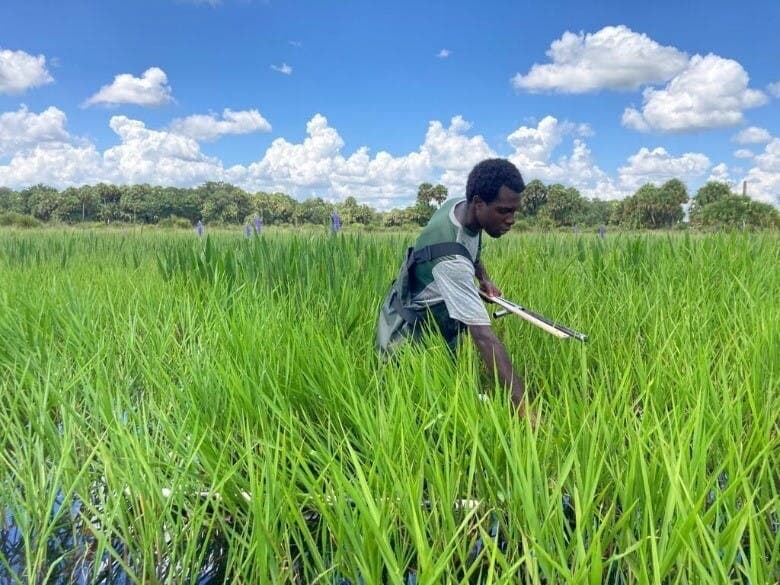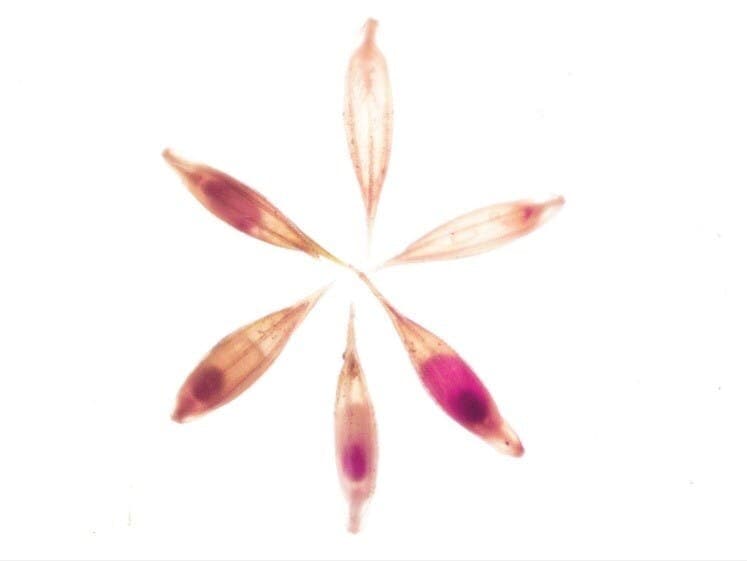 Photo by: Alma Reyes
Photo by: Alma ReyesArchbold Scientists Attend Florida Invasive Species Council Symposium
Author: Akiem Gough
The Florida Invasive Species Council held their annual symposium this March in Daytona Beach Shores. The event presented a great opportunity to share current research and advancements in the ecology and management of invasive species. Invasive species have caused significant damage to native species and habitats, and cost millions of dollars to manage each year. Florida habitats are particularly susceptible to biological invasion by invasive species because of the climate and abundance of water and nutrients. Conference attendees presented on a wide range of topics, including invasive plant monitoring, efficacy of different herbicide methods, and exploration of new biological control agents.
Dr. Grégory Sonnier, Archbold Agroecology Assistant Research Biologist, and Akiem Gough, Agroecology Research Assistant, presented research funded by the USDA Natural Resource Conservation Service on West Indian Marsh Grass (Hymenachne amplexicaulis), an invasive grass. “West Indian Marsh Grass is native to Central and South America and the West Indies. It can choke waterways and outcompete other native plants in its invaded range, but it is particularly palatable to cattle,” said Dr. Sonnier, who presented a talk on the ‘Efficacy of cattle grazing and herbicide application in managing West Indian Marsh Grass in Florida Wetlands’. Dr. Sonnier continued, “To better inform management, we also need to better understand the reproductive ecology of the species.”
Akiem Gough presented his research trying to understanding the reproductive ecology of West Indian Marsh Grass. His presentation, ’Seed output, seed longevity and seed bank persistence of the non-native invasive grass, Hymenachne amplexicaulis’, was based on his independent research project when he was a research intern in the Archbold Agroecology Program. Reflecting on presenting research at his first scientific conference Gough said, “This was a particularly exciting experience for me. Presenting my research at a conference has been a goal of mine since becoming a research assistant, and I am very grateful for the encouragement of Agroecology Program Director Dr. Betsey Boughton.”
Dr. Sonnier and Akiem received positive feedback about their research from conference attendees. In particular, colleagues were excited about the role that cattle could play as a potential biological control for invasive grasses in rangelands. Additionally, the Archbold research was unique because it highlighted the possible benefits of involving landowners in the efforts to mitigate ecological issues. Gough said, “It gave me a boost of confidence to hear that people cared about my work and that my presentation was easy to understand.”
Conferences are a great place to network, as many organizations and universities are represented, and there is a range of attendees, from students, early career scientists, to long-term professionals. Gough stated, “I’ve always thought applying to graduate school was an intimidating task, so having conversations with professors and their graduate students about the process was helpful.” Gough continued, “Another delightful part of my first conference experience was seeing historically underrepresented minority groups including People of Color and members of the LGBTQIA+ community in a space like this. It made me a little less nervous about being at the conference and have less doubt about my ability to be successful and have a place in the field of ecology at large. I noticed how we tended to find each other during the lunches and banquets; we expressed our shared experiences and showed support to each other. It definitely reinforced a sense of support and sympathy for each other, giving me hope that there are people in my communities that are out there working in ecology, and we are able and willing to look out for each other.”
 Photo by: Akiem Gough
Photo by: Akiem GoughPhoto: West Indian marsh grass (Hymenachne amplexicaulis) seeds chemically stained to test for viability. Seeds with red-stained embryos contain living, respiring cells. Photo by Akiem Gough.